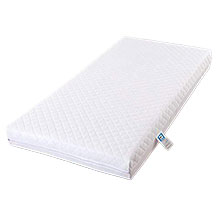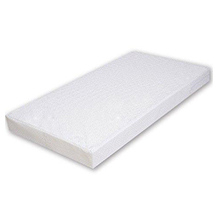Kids desk chair purchasing advice: how to choose the right product
- What you need to know
- Desk chairs for children are important not only when they have homework to do, but also when they regularly do crafts or paint.
- Various adjustments regarding seat height, backrest and armrest help to ensure that the child can adopt an ergonomic sitting position.
- There are rollers for hard or and soft surfaces and for different load. Often they can be replaced if necessary.
- The material of the seat and backrest is usually either fabric or imitation leather. Slipcovers protect the material from premature wear.
- Make sure there are no hazardous areas where children can pinch their fingers or otherwise injure themselves.
Comfortable and healthy sitting
At the latest, when your children are of elementary school age and regularly have homework to do, they will spend longer periods of time at their desks. Then the time has come to think about a suitable desk chair. After all, it should be comfortable enough that your offspring will want to sit on it, and also meet ergonomic requirements that supporta correct sitting posture. Ideally, the desk chair grows with the child and can be adjusted to the child’s height, for example, with adjustable armrests or a height-adjustable backrest.
Magic word ergonomics
Just like for adults, who often spend a third to half of their day sitting as part of their work or hobby, it’s important for children to have a healthy sitting position when working at a desk, painting or crafting. An ergonomic design of the chair is the be-all and end-all. This prevents incorrect sitting posture at a young age, which can sooner or later lead to malpositions or back disorders. Muscle tension is also prevented in a chair that supports correct posture.
In order to avoid one-sided strain on the back and to sit in a way that is as gentle on the body as possible, a few posture principles should be observed. The child should sit upright with the spine extended, positioning the legs at a right angle if possible and placing both feet firmly on the floor to relieve pressure on the body. The entire length of the seat should be utilized and the back supported in both the lower and middle areas. It is also important that the child slides around on the chair from time to time, shifts weight, and takes enough breaks from sitting.
Adjustable parts
The more parts of the desk chair are adjustable, the better individual components can be perfectly adjusted to the body. The backrest and seat can usually be adjusted in height and inclination. The armrests are also usually adjustable. Always note: A hollow back, a curved back or hunched shoulders are signs of an incorrectly adjusted child’s chair and put a lot of strain on the lumbar spine.
Seat height
With the help of a gas spring, which is built into the chair leg, the seat height can be adjusted. The perfect height is reached when you can place the soles of your feet completely on the floor in an upright sitting position and your legs are at about a right angle. To ensure that the seat height can continue to be optimally adjusted during growth, there should be some leeway. Many chairs have a minimum height of 35 to 40 centimeters and can be raised about 15 centimeters.
Backrest
The upper edge of the backrest should be at about shoulder height when the patient is sitting upright. If it is slightly narrower in the region and rounded towards the back, sitters can comfortably lean back or stretch. In this case, it is also important that the backrest can “grow with” and is adjustable in height. Often backrests are made of foam covered with fabric, but there are also chairs with an air-permeable mesh backrest made of polyester. This is more comfortable especially on hot days.
Armrests
Not all children’s desk chairs have armrests. Children often find them uncomfortable or disruptive because they can restrict movement. Chairs with detachable armrests are practical. If the chair has armrests, they should at least be adjustable in height. Also, make sure that these parts are installed particularly stable, because children often lean on them when standing up.
Lumbar support
A detail of the backrest that is not included in all chairs is the lumbar support. This is located – if present – on the lower third and exerts discreet but supportive pressure on the lower spine. This is because it is not straight, but slightly S-shaped and can be better supported by a curved backrest. This ensures a comfortable fit in an upright position. Ideally, the lumbar support sits at the level of the lower iliac crest. Sometimes the strength of the pressure is adjustable.
Rollers for any surface
Desk chairs, in most cases, have casters. Unlike office chairs for adults, however, children’s chairs usually do not differentiate between castors for hard or soft surfaces. Since the load is low due to the comparatively low weight, children’s desk chairs are usually always equipped with soft-bottomed castors made of solid plastic. Larger rollers do not press into a soft carpet as much because the rolling resistance is less. Instead of resorting to the standard roller diameter of five centimeters, you can choose, for example, 6.5 centimeters. Usually, the casters of office chairs are interchangeable.
Foot cross or star?
Make sure that the chair has five casters, as this will provide some stability. In the past, office chairs often had only four casters. The four-armed base to which they were attached is therefore still called a foot cross, although it has the shape of a star with five or more arms.
Security
Additional safety is provided by the so-called braked rollers. These prevent the chair from rolling when no one is sitting on it; the roller brakes are automatically active. So children can not accidentally move the chair while you want to sit down. The brakes are only released when someone sits on the chair or the chair is loaded.
Protection
If parents are concerned that the wheels of the desk chair will cause damage to the floor of the room or leave marks if it is laminate or parquet, you can buy a pad . This is usually made of plastic or rubber and also reduces the noise of the rollers on the surface. A small carpet is also suitable for this purpose.
Alternatively, you can resort to desk chairs without wheels at all. Swivel chairs with fixed stand as well as static versions are available. However, keep in mind that your child should be able to sit in the chair for several years after, if possible.
Material and cover
Desk chairs are equipped with comfortable padding inside, usually foam. Pay attention to the recommended load – children’s desk chairs are softer than adult models. Also important is the material with which the seat and backrest are covered. Leather or imitation leather are very durable and easy to clean, which are noteworthy advantages when used by children. Fabric covers, on the other hand, are breathable, which is especially beneficial on warm days, when children do not sweat so quickly. In addition, chairs covered with fabric are usually cheaper models made of leather. There are also chairs with unupholstered backrest, which is covered with air-permeable mesh fabric. So there is always enough air to the back. For hot summer days such models are a good choice.
Protective covers are designed to protect the material from wearing out too quickly. They are made of fabric, polyester or spandex and are available in various sizes and designs. Particularly elastic covers can be adapted to different types and sizes of chairs. Zippers on the edges make them easy to pull off and on. Most protective covers can be cleaned in the washing machine . Please observe the manufacturer’s instructions.
On top of that, covers give you the opportunity to meet the color preferences of your offspring – after all, tastes often change at a young age. While a playful pattern or motif of the favorite comic book character was still the child’s fervent wish in early elementary school, it may no longer be in demand by the age of nine or ten.
Load capacity
When buying a desk chair, pay attention to what weight it is designed for. According to the manufacturer, many models can carry a maximum load of 50 or 60 kilograms, which is usually enough for children into their teens. The minimum weight of the child is also important, as the gas spring for changing the seat height, for example, needs a certain load to be triggered.
Check security risks
The more levers and adjustment screws a desk chair has for fine-tuning, the higher the risk of pinching your fingers. Especially small children, who are often careless with such adjustment options, could hurt themselves with some chair models. Therefore, check in advance that small fingers cannot injure themselves when adjusting the individual parts and that there are no sharp-edged or pointed components anywhere. Another source of danger are the armrests: If they are set at the wrong height, children can trap their hands between them and the tabletop.
Also, make sure that the office chair does not tilt. Once the child puts the backrest completely back, the chair should not fall over backwards. Children often sit carelessly in various positions on the chair or shift their center of gravity to one side. The desk chair should be designed for this and not tip over.
What unfortunately cannot be seen and is difficult to check are the fabrics used in the chairs. Especially the frames and armrests, which are usually made of plastic, are processed various chemical compounds. Plasticizers such as phthalates are added so that plastic can be molded into a certain shape. Strict limits apply to them, as they are suspected of being harmful to health. For example, they could get into the skin through sweat. Therefore, check whether there is a test for your favorite chair regarding harmful substances and keep an eye on which manufacturers have already attracted attention because of critical values.
Ergonomic without backrest?
An alternative to the “classic” swivel and desk chair is a stool that encourages dynamic sitting, such as the Aeris Swoppster. Thanks to a ball joint in the base, the seat moves flexibly. In this case, since the body is busy maintaining balance, the back remains straight and the muscles there are strengthened. The principle is quite similar to an exercise ball. At the same time, children are not restricted in their urge to move and an unhealthy sitting posture is prevented. Especially if they otherwise sit rather restlessly in the chair, they are encouraged to move by such a stool.

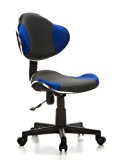
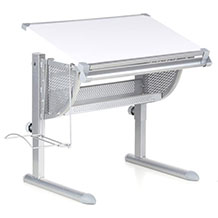
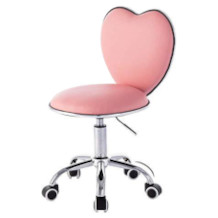
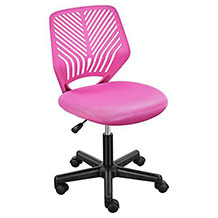
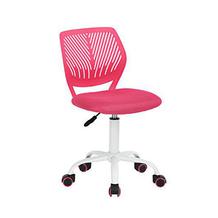

 452 reviews
452 reviews
